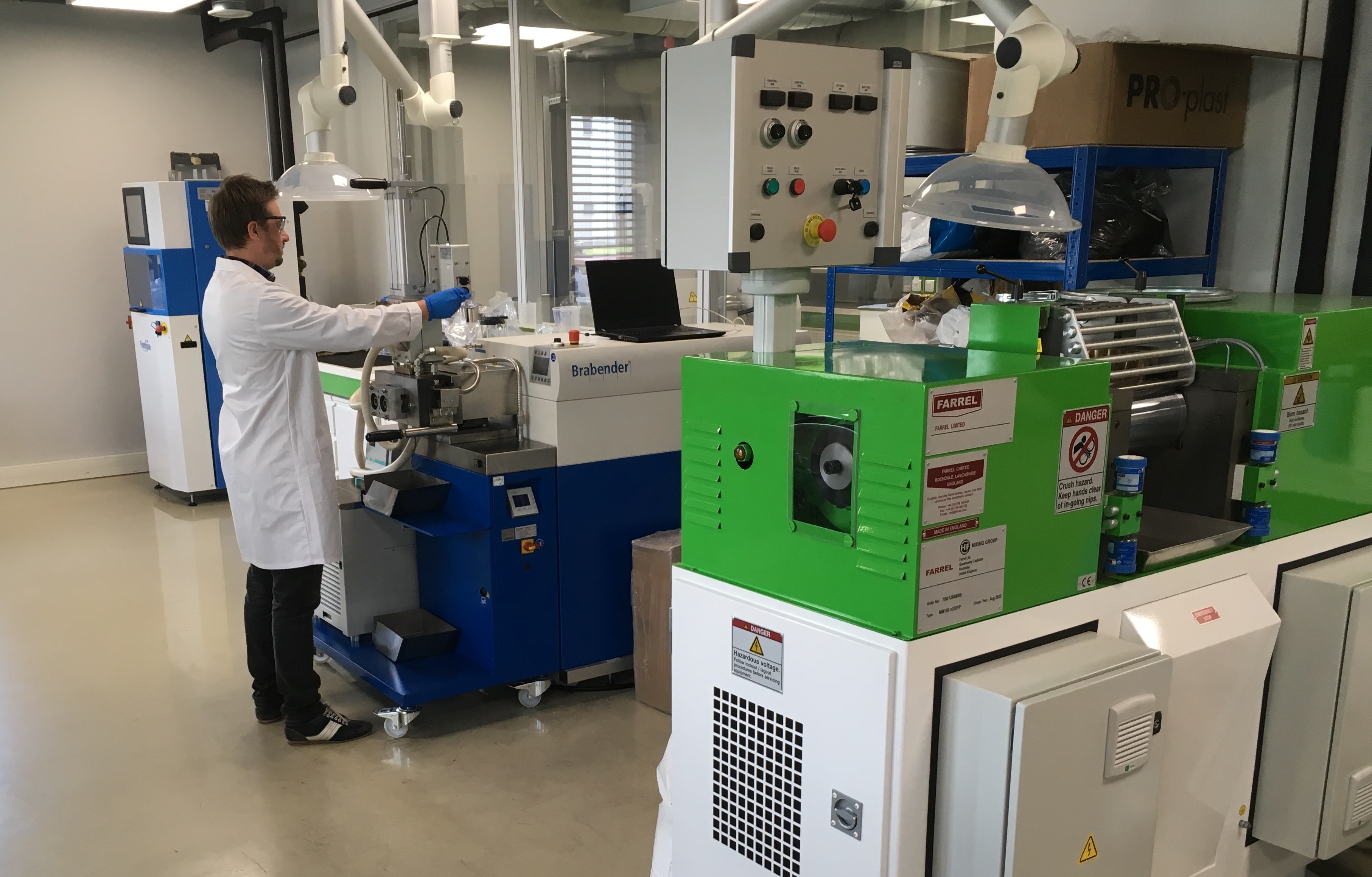Developing sustainable and durable polymers with nanotubes: Tire & rubber lab in Luxembourg
The tire and rubber compounding lab of TUBALL CENTER Luxembourg is at the forefront of the development and implementation of cutting-edge technologies for automotive, electronics, production, and other fast-evolving industries. Today, with the laboratory fully equipped and actively providing technical support to European customers, we publish a special interview with Jean-Nicolas Helt, Development and Support Leader for Elastomers at OCSiAl Group. He reveals project details, the most frequent market requests, and promising developments in the field of nanotube-augmented rubbers.

Why are high-performance elastomers improved by nanotubes of high importance to the European market?
The elastomer industry hasn’t seen fundamental changes very often in its history. Since the 30s with the use of rubber compound cured for elasticity and enhanced with carbon black for mechanical strength, we can notice only a few major changes, the last one being the utilization of silica that started in the 90s.
Today, the elastomer industry needs a further such major transformation of material technology, especially to respond to the needs linked to CO2 emissions and energy consumption reduction, touch screen and electronic features, weight reduction, and electrical vehicles. In this scope, graphene nanotubes represent the largest potential ever observed for rubber product performances and for consumer satisfaction.
TUBALL Center Luxembourg (TCL) was designed to provide technical support to European clients and to develop new products for different rubber applications. After almost one year of TCL operational activity, we see that the number of rubber-related projects is increasing continuously, following growing market awareness about the unique performances that can be achieved with TUBALL graphene nanotubes.

What are the most frequent market requests from our customers, partners and distributors?
The requests come from many different rubber industries, covering applications like tires, seals, hoses, transmission belts, dampers, and conveyor belts. Among the most frequent requests, we can often see the need to improve sustainability, durability, and more generally to improve all material properties without the trade-offs that are traditionally faced in rubber product development.
Moreover, we can see that TUBALL is frequently considered as a way to create new types of rubber products that were not feasible with traditional technologies. For example, it is now possible to produce colored antistatic gloves compliant with the latest EN and ATEX requirements. Such gloves allow touch-screen compatibility, comfort, and protection in severe conditions, while in the past these products had unstable antistatic properties, always a black color, and significant drawbacks in flexibility and comfort.
Are there upcoming OCSiAl projects that are not under development yet, but will be highly desirable in the near future?
There are so many applications and final products where TUBALL will bring tremendous benefits that not all of them have been explored yet. For example, knowing that graphene nanotubes show improvements in durability in aggressive environments, it’s possible to replace high-performance rubbers with commodity compounds enhanced with TUBALL nanotubes. Another example would be the highly conductive rubber compounds that are being considered to replace metals in some electrical wires, electrodes, and hoses. This major technical step would be a revolution for design freedom and weight reduction in automotive and aerospace applications, and the necessity of TUBALL becomes obvious to achieve such a step by providing the required combination of conductivity and reinforcement.
What equipment does the laboratory have, and what are the application areas it can cover?
Since OCSiAl’s strategy is to offer TUBALL graphene nanotubes in the form of concentrates or suspensions in different carriers for an easy and effective introduction in our customers’ final materials, standard equipment can be used to introduce our product in rubber compounds.
Therefore, our laboratory is equipped with many tools available in the rubber industry, and these tools are similar to the ones our customers will use.
For rubber processing, the equipment includes, for example, an internal mixer, open mills, a curing press, and an extruder. We can of course test many properties in our lab, such as tensile properties, abrasion, rebound, surface and volume electrical resistivity, or microscopy.
As examples of applications covered by some of our recent projects, I can mention new-generation tires for EVs, high durability transmission belts, colored antistatic flooring for industry, and high durability fire retardant hoses.
How do you see the development of the lab in the future?
European industry is booming with automotive at the forefront of technological disruption processes. TUBALL Center Luxembourg will for sure evolve to be able to support customers in their developments with a growing demand in a more and more diversified range of applications. Therefore, this evolution will include more staff in order to increase output, but also different equipment to be able to support a larger diversity of customers, while always using similar tools and processes to customers’ industrial equipment.